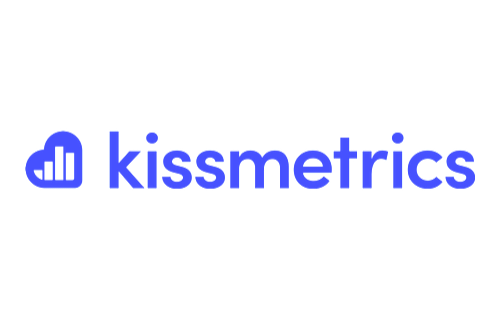Unlock the Power of Product Analytics
Drive Growth and Boost User Engagement with Cutting-Edge Insights
Hey there!
As someone who's been in the digital analytics field for over 25 years, I've seen it change and evolve in countless ways. In such a fast-paced industry, it's crucial to keep learning and stay ahead of the curve. And what better way to learn than by sharing with others?
That's why I'm excited to start this newsletter and share my insights and experiences in the fascinating world of product analytics.
Why product analytics
So, why product analytics and why now? Well, I believe that product analytics is the natural evolution of digital analytics, as it goes beyond surface-level metrics and provides a more nuanced understanding of user behavior.
Ultimately, this understanding helps businesses make better decisions and improve the user experience.
Digital Analytics vs Product Analytics
Let's take a closer look at how digital and product analytics differ. While digital analytics looks at the big picture of a digital ecosystem, product analytics zooms in on a specific product or service to better understand user behavior.
Digital analytics has traditionally focused on analyzing data from websites and digital marketing campaigns to optimize performance and improve user experience.
However, as digital products and services become more complex and user behavior becomes more nuanced, there is a growing need for a more focused and product-centric approach to analytics.
That's where product analytics comes in. It's an extension of digital analytics that focuses on understanding how users interact with a specific product or service, with the goal of improving its design and features.
Trends in Product Analytics
Over the past two years, product analytics platforms have experienced significant advancements, driven by the need for deeper insights into user behavior, personalization, and enhanced customer experiences.
Several emerging trends have shaped the landscape of product analytics, impacting various stakeholders and creating challenges and opportunities. Let's explore these trends, their implications, and some real-life case studies.
Customer Data Platforms (CDPs): CDPs have gained popularity as businesses strive to unify customer data from multiple sources and create a single, comprehensive view of their users. This trend enables more personalized experiences and targeted marketing efforts. A prominent example is Segment, which consolidates user data from multiple touchpoints and integrates with various analytics platforms.
Artificial Intelligence (AI) and Machine Learning (ML) Integration: The integration of AI and ML in product analytics platforms has allowed for advanced data analysis, pattern recognition, and predictive analytics. This enables businesses to proactively identify potential issues, optimize user experiences, and make data-driven decisions. A case in point is Amplitude's machine learning features that help identify behavioral patterns and provide recommendations.
Real-time Analytics: Real-time analytics has become increasingly important as businesses aim to respond quickly to user behavior and adapt their strategies accordingly. Tools like Mixpanel and Heap provide real-time insights, enabling businesses to make immediate adjustments and improve user engagement.
Privacy and Data Governance: With growing concerns about data privacy and increasing regulations, product analytics platforms are adapting by implementing privacy-focused features and data governance capabilities. This ensures compliance with regulations such as GDPR and CCPA while protecting user data.
Comparing different approaches within product analytics platforms, some solutions focus on specific aspects such as CDPs (e.g., Segment), while others, like Amplitude and Mixpanel, provide comprehensive analytics capabilities. The choice depends on factors like budget, required features, and the business's specific needs.
Looking forward, several predictions and implications can be made for the future of product analytics:
Increased Focus on Privacy and Security: The importance of privacy and security is expected to grow, driving the development of privacy-focused analytics tools and the implementation of more robust data governance practices.
Enhanced Personalization and Predictive Analytics: As AI and ML capabilities continue to advance, product analytics platforms are likely to offer more sophisticated personalization and predictive analytics features, enabling businesses to tailor experiences to individual users and anticipate their needs.
Omnichannel Analytics: With the proliferation of devices and touchpoints, businesses will increasingly seek analytics solutions that provide a unified view of the customer journey across all channels, leading to a greater emphasis on omnichannel analytics.
As these trends continue to emerge, businesses are using product analytics to drive user engagement and retention, optimize conversion rates, and deliver personalized experiences to users.
By analyzing user data and behavior, businesses can create targeted and personalized experiences that meet the unique needs and preferences of individual users.
Product analytics tools
While this newsletter will not primarily focus on the tools available in the market, it's essential to recognize and learn from the significant trends emerging in the analytics tool landscape.
These tools, each boasting distinct features and strengths, collectively emphasize user behavior analytics and product optimization to enhance user experiences:
Amplitude
https://amplitude.com/
Amplitude is a powerful product analytics platform that provides user behavior insights, real-time data, and advanced segmentation. It helps businesses understand how users interact with their web and mobile apps, identify patterns, and optimize the user experience to drive growth and retention.
Mixpanel
https://mixpanel.com
Mixpanel is a user-centric analytics platform that provides real-time event tracking, user segmentation, and funnel analysis. It is a popular alternative to Amplitude, helping businesses optimize user experience and engagement.
Heap
https://heap.io
Heap delivers user-centric analytics and behavioral data with automatic event tracking, making it a strong contender in the product analytics space. It allows businesses to optimize app performance and user engagement based on data-driven insights.
Pendo
https://www.pendo.io
Pendo is a product experience platform that combines user analytics, in-app messaging, and user feedback. It enables businesses to gain insights into user behavior, engage with users, and gather feedback to improve the overall product experience.
Kissmetrics
https://www.kissmetrics.io
Kissmetrics is a customer engagement automation platform that offers in-depth user behavior insights, segmentation, and marketing automation capabilities. It helps businesses understand their users better and optimize user experience based on data-driven decisions.
Woopra
https://www.woopra.com
Woopra is a real-time customer analytics tool that tracks user behavior across multiple touchpoints and devices, enabling businesses to create personalized user experiences and drive growth.
See you soon
I hope this first publication of my newsletter has given you a better understanding of product analytics and its importance in the digital analytics landscape.
Keep an eye out for my next newsletter, where we'll dive deeper into the world of product analytics and explore some exciting new trends and developments.








